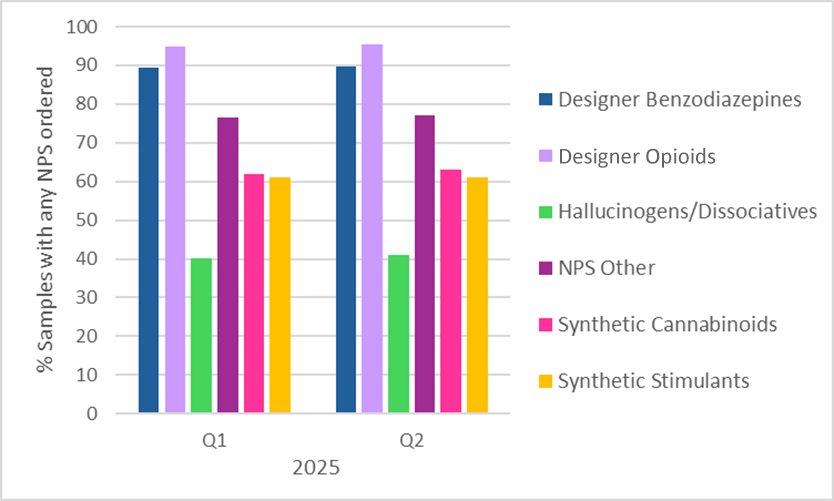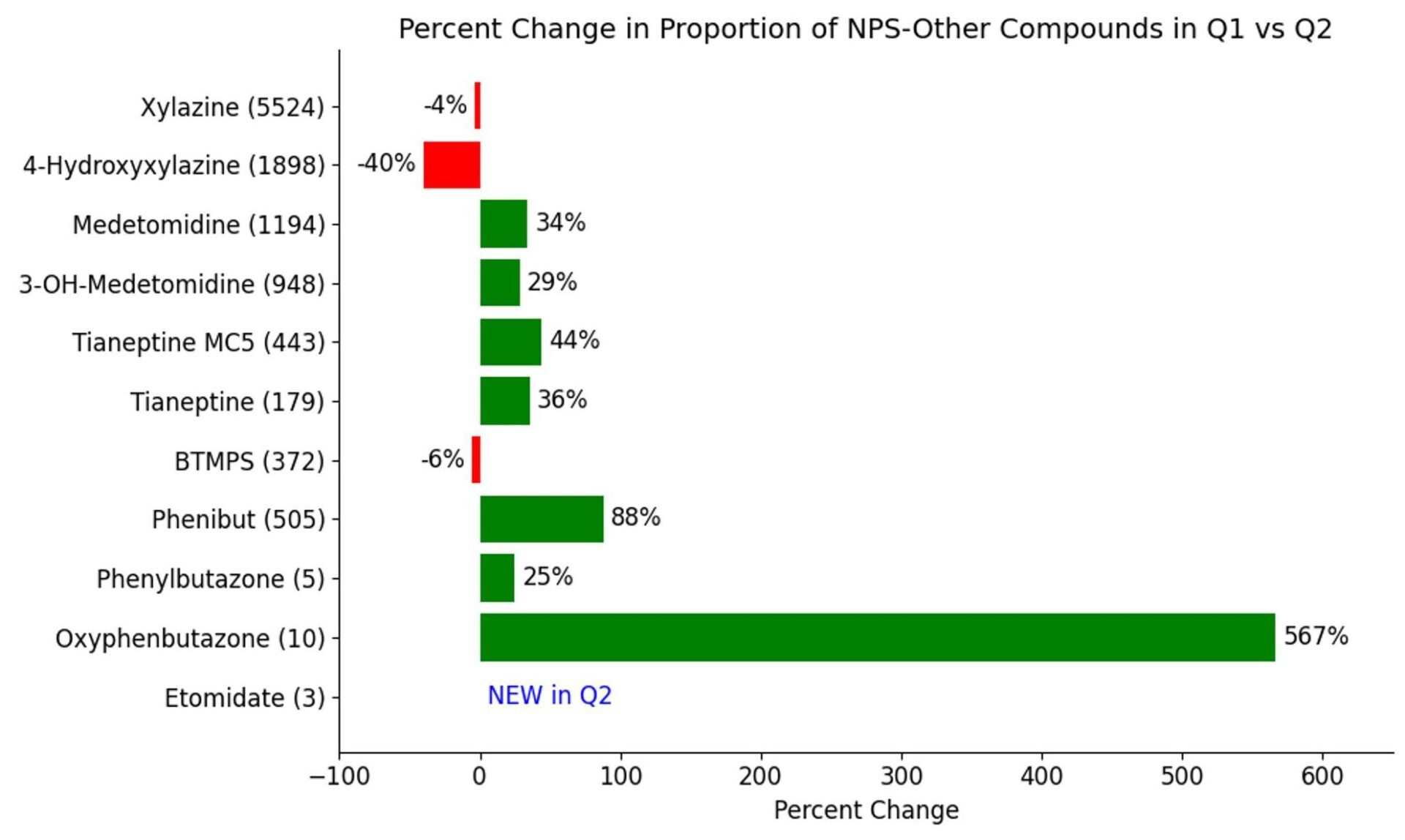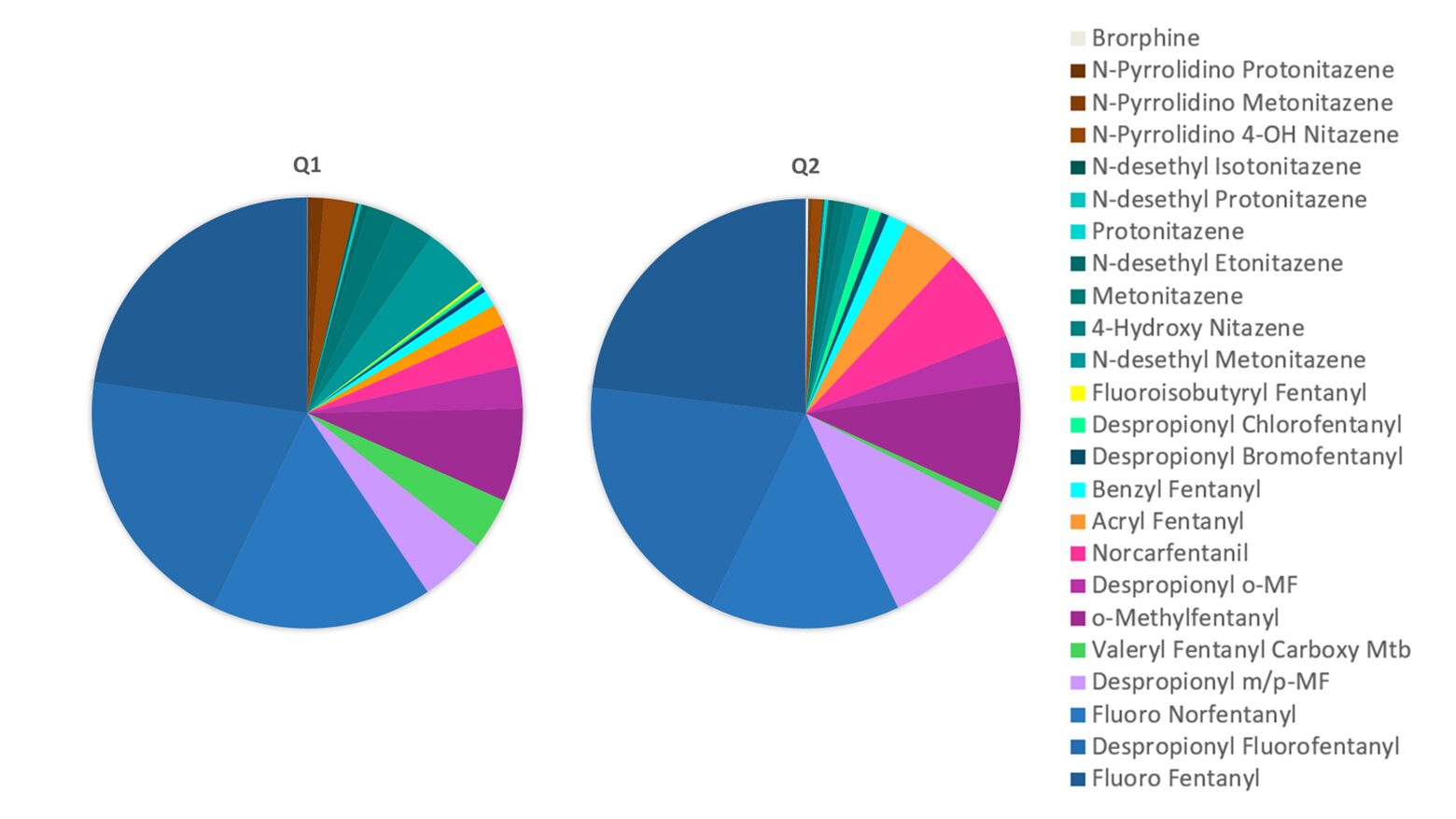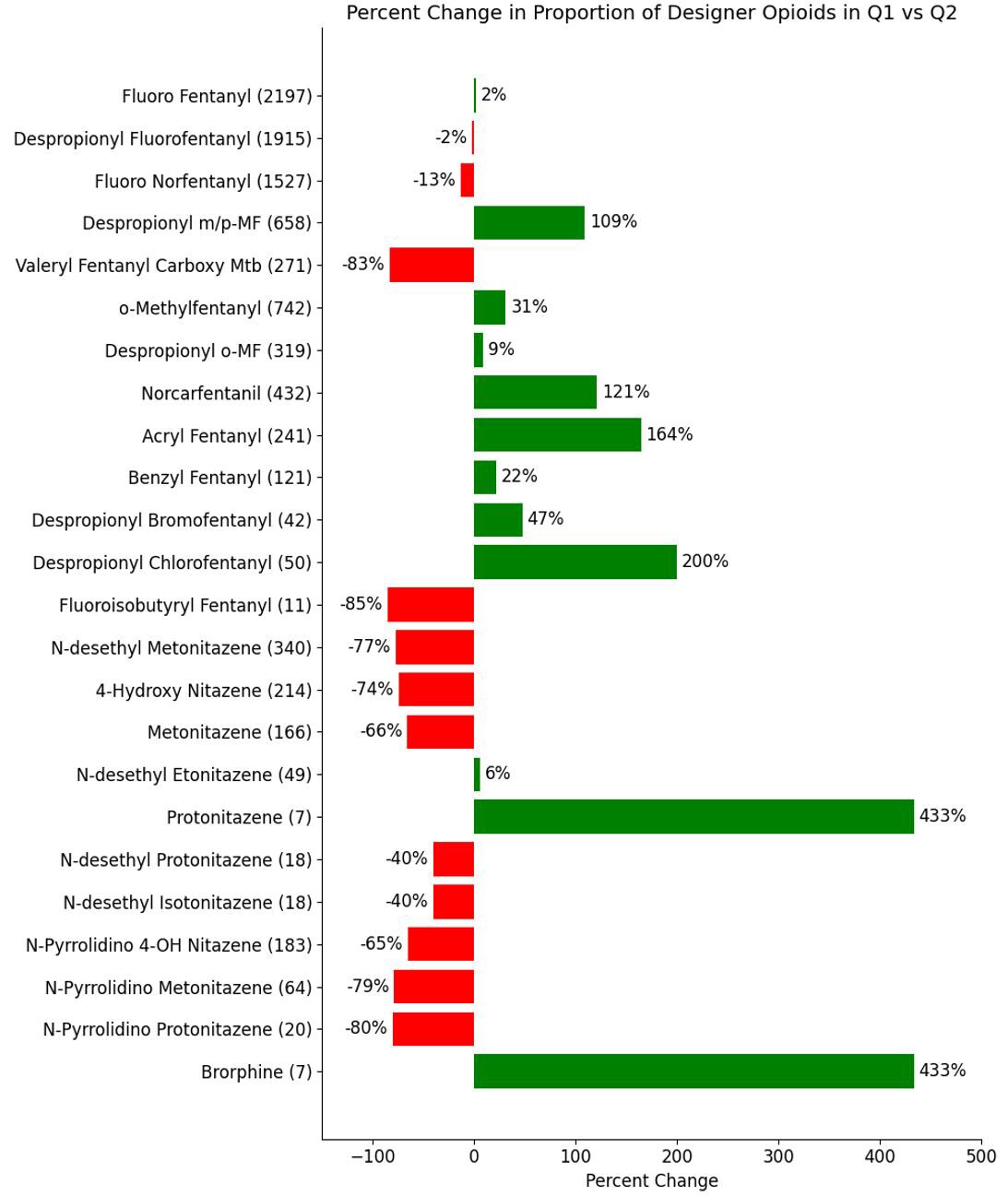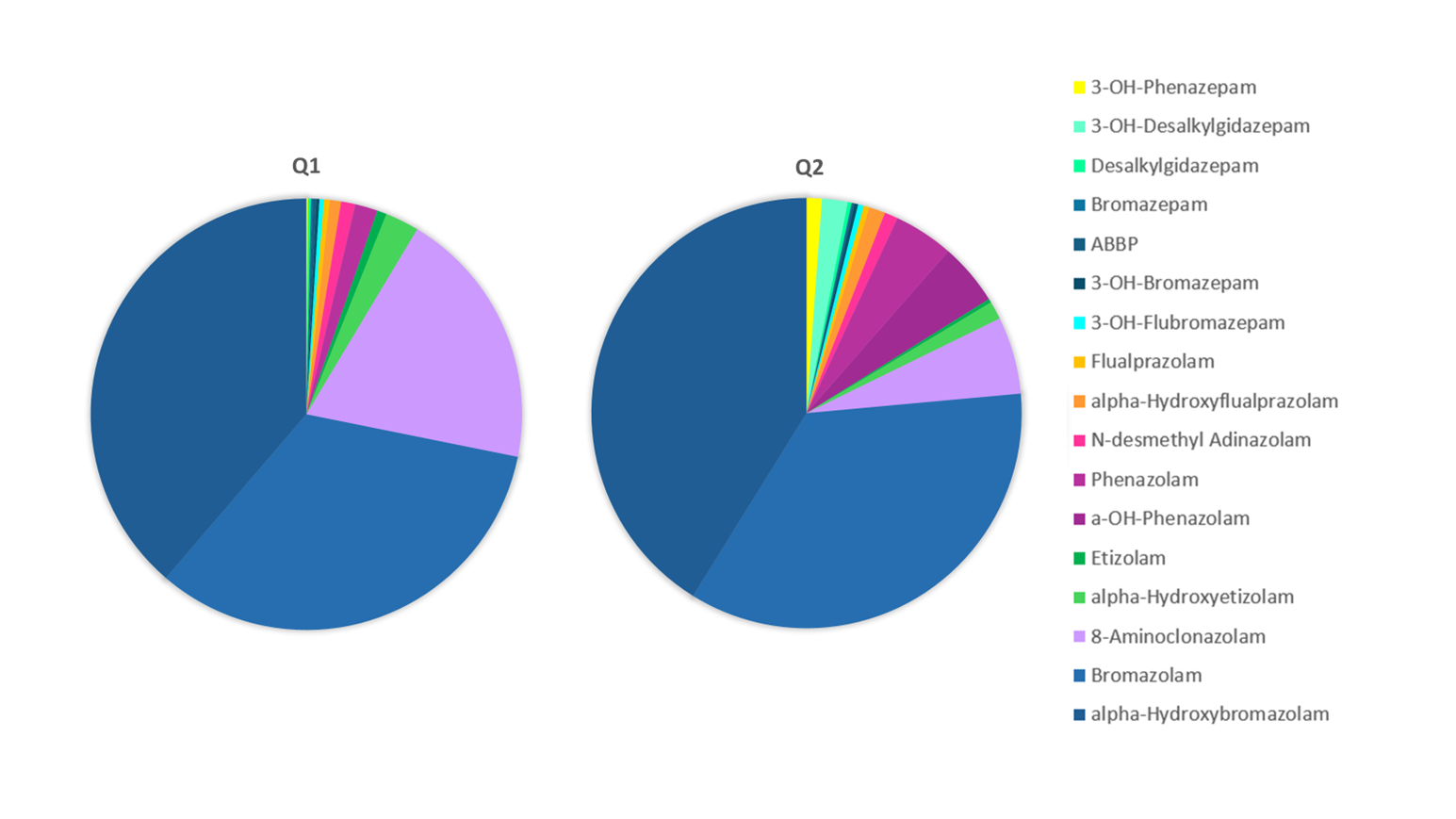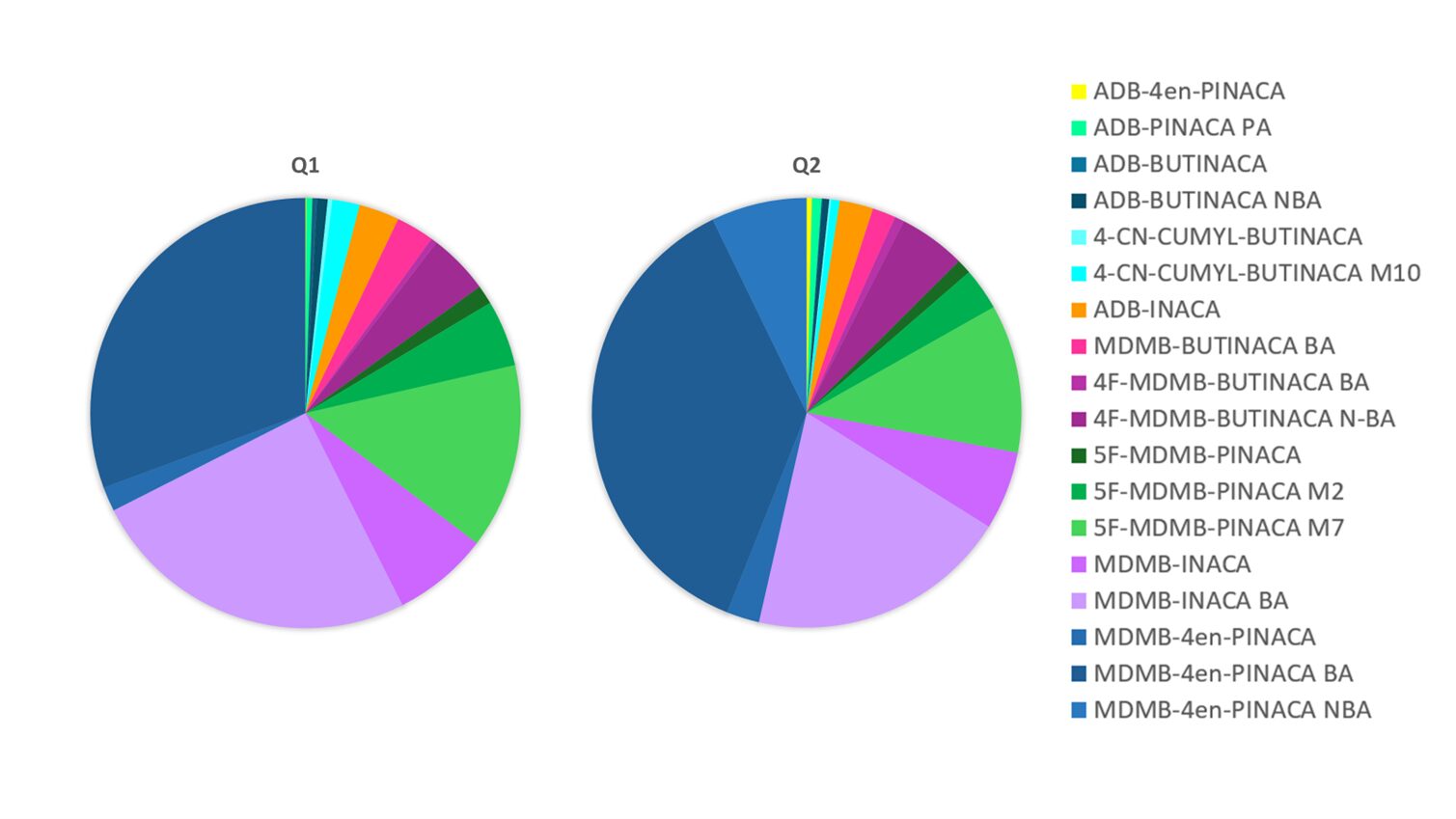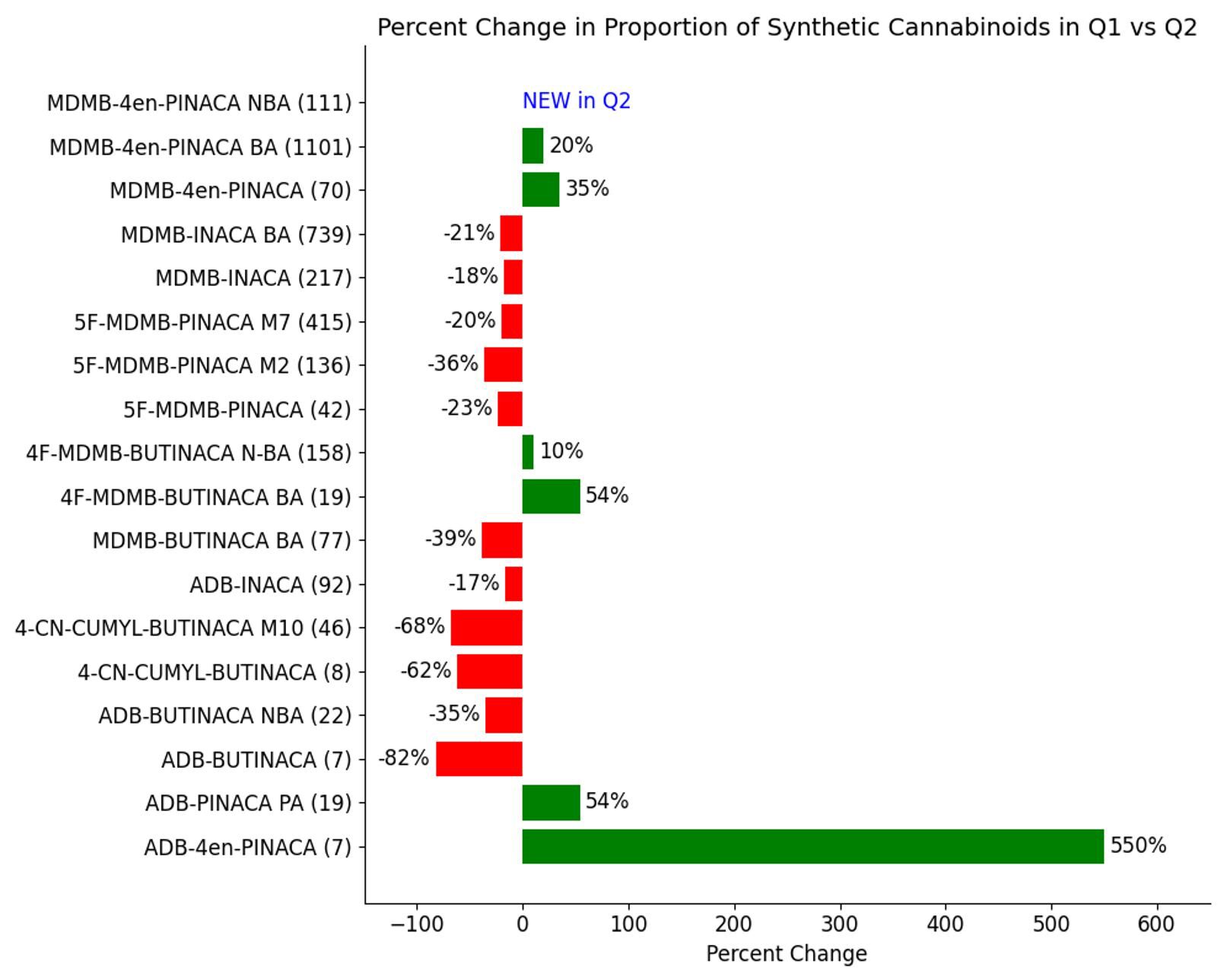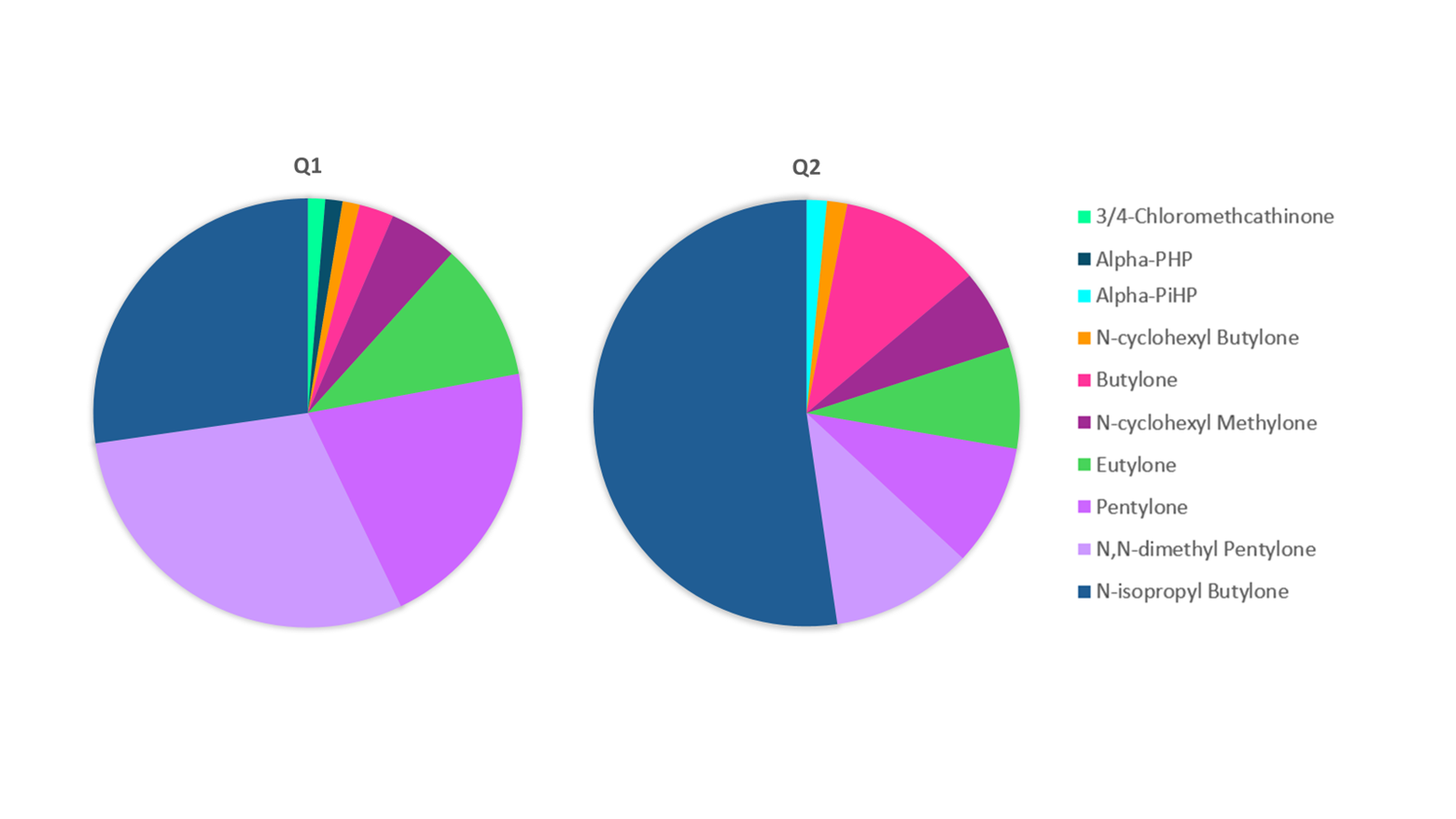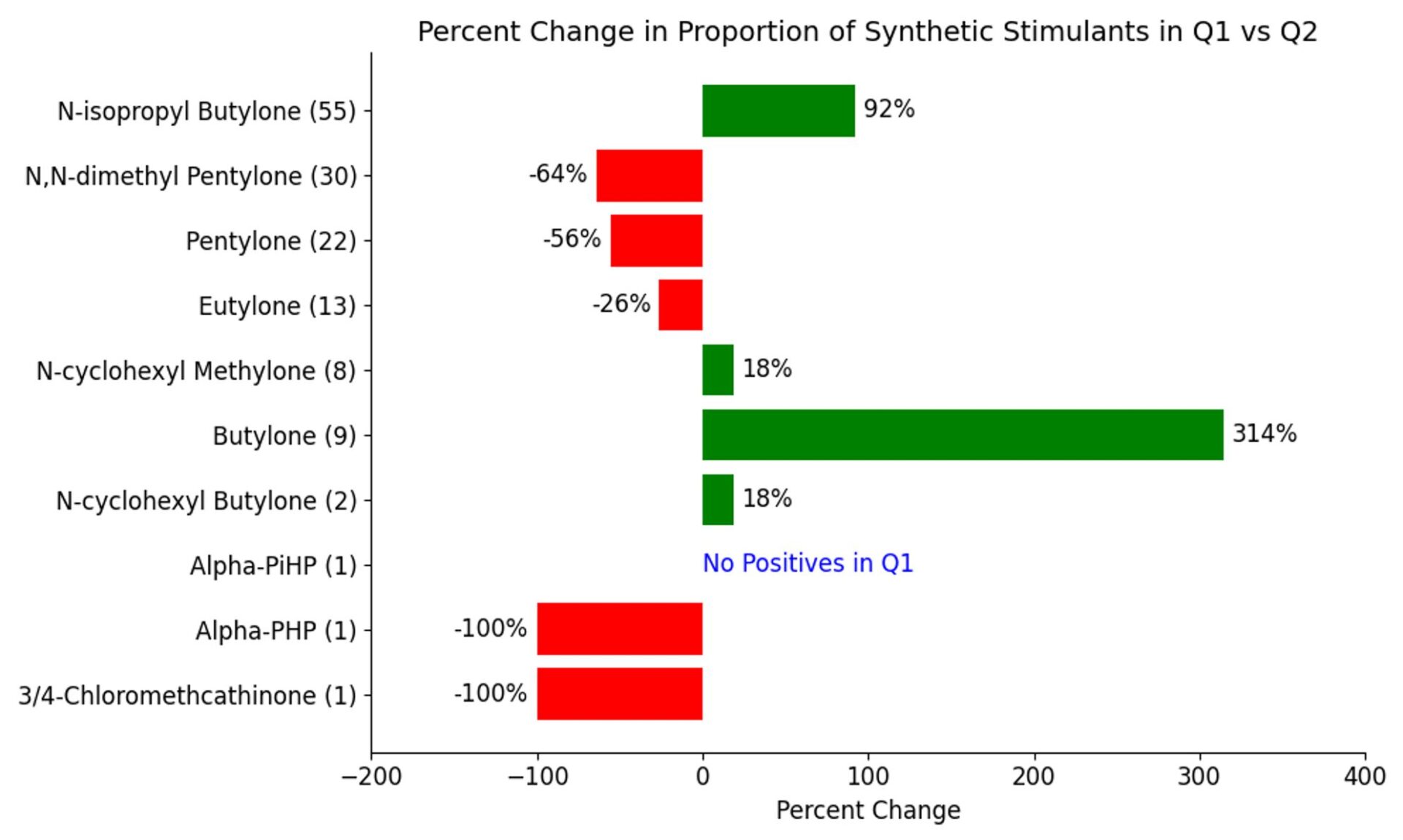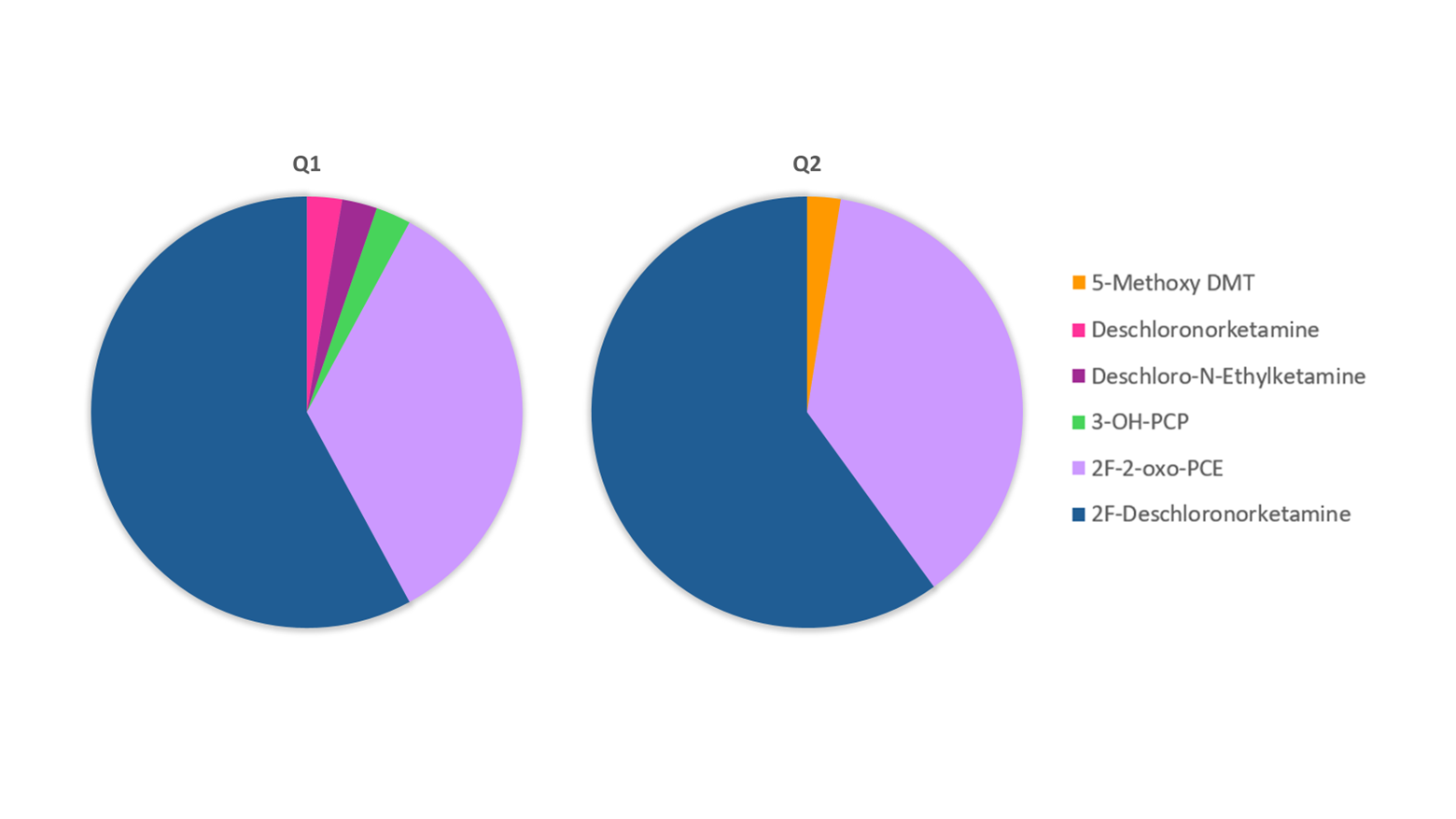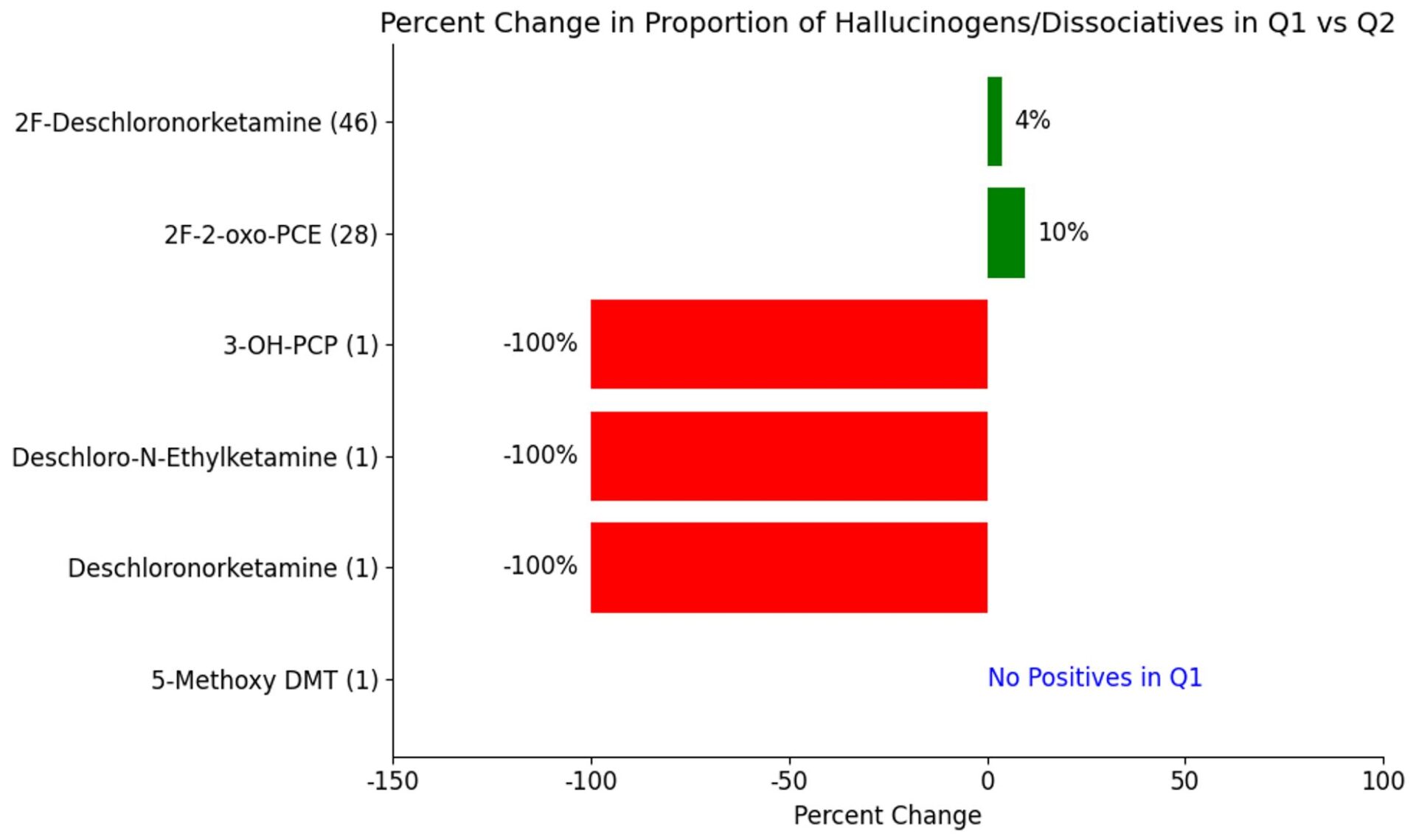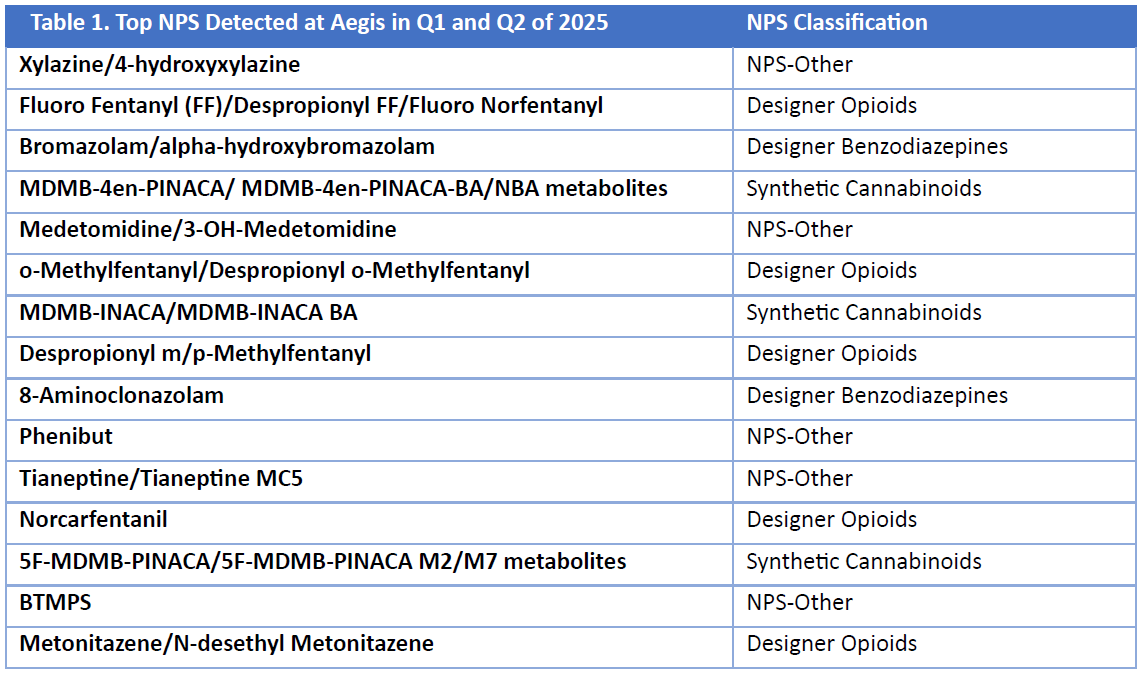2025 Mid-Year Novel Psychoactive Substance (NPS) Update
New or Novel Psychoactive Substances (NPS) are a diverse group of synthetic substances created to mimic the effects of prescription or illicit drugs that are often used non-medically.1 There are various classes of NPS including designer opioids, designer benzodiazepines, synthetic cannabinoids, synthetic stimulants, hallucinogens/dissociatives, and others. NPS may change frequently as legislation to control specific chemical structures or classes of NPS is introduced. Once an NPS has been deemed a controlled substance, often new or modified non-regulated NPS appear. This remains a challenge for regulatory and enforcement agencies, monitoring institutions, clinical and toxicology laboratories, as well as healthcare providers. The goal of this clinical update is to review the prevalence of NPS detected at Aegis and trends in detection from Q1 to Q2 of 2025. The latest update to Aegis NPS testing was in June of 2025.
Aegis offers NPS testing by class in both urine and oral fluid. Test offerings include designer opioids, designer benzodiazepines, synthetic cannabinoids, synthetic stimulants, hallucinogens/dissociatives, and NPS-Other. Shown in Figure 1 are 2025 NPS order rates by class, for Q1 and Q2. Of the total number of samples with any NPS class ordered, designer opioids class was the most frequently ordered at approximately 95% followed closely by designer benzodiazepines at approximately 90%. The NPS-Other class was the next most frequently ordered class at approximately 76% of samples with any NPS class ordered. Order rates for synthetic cannabinoids and synthetic stimulants were similar, ranging from 61 to 63%. The hallucinogens/dissociatives class was the least frequently ordered class at a rate of roughly 40% of samples with any NPS ordered. Order rates remained similar between Q1 and Q2 for all classes. When evaluating NPS data, it is important to consider that order rates may impact NPS detection and observed prevalence both within a class and between classes. In order to lessen this impact, the data in this clinical update are presented by drug/metabolite as proportion of NPS detected in a given class per quarter. Trends were then evaluated by looking at percent change in proportion from Q1 to Q2.


